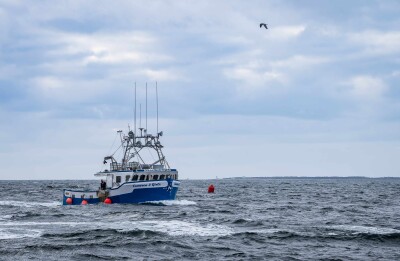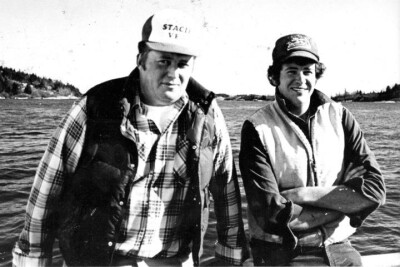Cause for alarm
From U.S.
Coast Guard reports
At 6 a.m. one mid-January day, a 76-foot steel-hulled trawler was motoring for home south of Montauk, N.Y., battling high winds and 13- to 15-foot following seas, which were breaking over the port quarter.
With the mate at the helm, the skipper went to correct a generator fuel-system problem in the engine room. As he passed the electrical breaker panel, he didn’t notice that the automatic bilge high-water alarm-system switch was off.
But back in the wheelhouse, the skipper immediately recognized that the vessel wasn’t riding normally. Looking aft, he saw the portside lazarette hatch cover had come off, and waves crashing over the stern were entering the open hatch.
He roused the two deckhands sleeping below and directed efforts to replace the hatch. But several feet of water were already in the lazarette, and the trawler’s rolling motion and pounding waves impeded efforts to secure the hatch. The vessel’s bilge-pump system could barely keep pace with the incoming water.
Two hours later, with the vessel’s stern starting to sit lower in the water, the skipper radioed a nearby vessel, which provided an additional submersible pump at around 10 a.m.; unfortunately, it was of limited capacity. Just then, the trawler’s main bilge pump failed. Skipper and crew improvised, using a deck-wash-down pump in its place.
Water in the lazarette was now at deck level, and there were signs of progressive flooding into other compartments. The skipper directed the crew to don survival suits and prepare to abandon ship.
Meanwhile, the nearest Coast Guard Command Center had been monitoring the radio communications and dispatched a rescue helicopter to deliver two additional dewatering pumps at 2:30 p.m. But waves crashing over the stern interfered with efforts to start and continuously run the additional pumps. The stern was almost completely under water, and the boat was developing a list.
Just past 4:30 p.m. the skipper told the rescue helicopter they were abandoning ship. The helicopter deployed a rescue swimmer and retrieved the trawler crew shortly before the boat sank.
Lessons learned
Had the automatic bilge high-water alarm switch been on, it would have alerted the crew to the flooding problem earlier and may have bought them time to get ahead of the flooding. Had the trawler contacted the Coast Guard hours earlier, dewatering pumps and more assets could have been sent to the boat.
Recognize when your boat might be in trouble, and don’t hesitate to call for help so you can fish safely.








